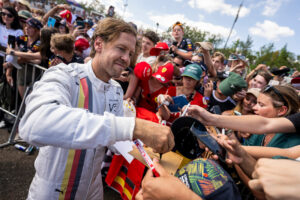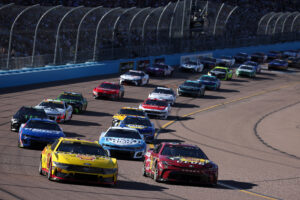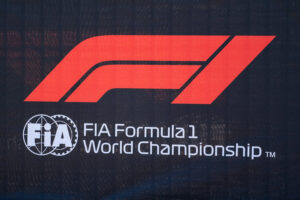Hot off the heels of the Qatar Grand Prix, here are the most physically demanding races in Formula 1’s history.
The discussion that arose from the Qatar Grand Prix left many questioning whether the race pushed the drivers too far. With drivers reporting that they suffered from burns and dizziness, the FIA launched its own review into the dangerous conditions, but this is not the first time that a Formula 1 race has pushed drivers to the limit or even beyond.
Argentine Grand Prix – 1955
Held in Buenos Aires on 16th January 1955, this race would prove to be on of the most exhausting for the drivers, causing a permanent injury to the race winner, Juan Manuel Fangio. Despite Fangio moving out to Argentina one month before the race, in an attempt to acclimatize himself to the conditions, once race day rolled around this effort proved to be unsuccessful.
Both Fangio and Roberto Mieres were the only two drivers to finish the race without having a shared drive, as allowed by Formula 1 from 1950-57. Both drivers suffered with the soaring temperatures, however, it is Fangio who would come out worse. The 5x World Champion would suffer from a severe burn on his leg due to the chassis of the car being heated up by the exhaust during the race. He would take a few months to recover from this injury, but the scar became a permanent reminder of his home race in 1955.
Dallas Grand Prix – 1984
Formula 1 is no stranger to racing in Texas but before COTA, there was Dallas. The 1984 Grand Prix will go down as one of the most memorable in the sport not least for the extreme heat that caused chaos on race day.
Before the race took place, the track surface started to disintegrate due to the sun beating down on the tarmac. There was no other option but to undertake an emergency repair of the track just 24 hours before the Grand Prix, but this would not be the only concern for the scorching summer weekend in Texas.
Pre-empting the relentless conditions of the Dallas Grand Prix, Keke Rosberg used a water-cooled skull cap to remain cool during the race. This was not the only measure put in place to try and curb the heat as the race, which was originally scheduled for 2 p.m., was moved forward to 11 a.m. in a bid to avoid the boiling temperatures in the afternoon.
As the race took place, the Dallas crowd would see a dramatic end after Nigel Mansell clipped the wall, resulting in a gear linkage problem. Mansell’s Lotus would come to a halt just before the finish line and in one final push, the British driver jumped out of his car and tried to push it to the end. Before he could reach the finish, extreme exhaustion and dehydration would kick in and Mansell collapsed meters away from the chequered flag.
Brazilian Grand Prix – 1991
The 1991 Grand Prix at the Interlagos circuit saw Ayrton Senna take his first home win in Formula 1.
Starting from pole, the Brazilian driver got off to a great, however his closest rival in the race, Nigel Mansell, began to close the gap. The threat of Mansell eventually subsided as he spun out of the race with a gearbox issue and it wouldn’t be long before Senna had gearbox issues of his own.
In the final few laps before the finish, Senna lost every gear apart from sixth and battled to bring the car home. As he crossed the line, the effort of trying to keep the car under control finally took a toll. Senna suffered from muscle cramps and a fever as he was assisted out of the car and driven to the podium in the medical car.
Brazil finally got to see their home hero lift the trophy but not without an arduous battle to the finish.
Azerbaijan Grand Prix – 2022
If we take a look back to the not-so-distant past, you’ll remember that just last year we saw the ongoing effect of porpoising. As this new generation of cars took to the track for the first time in 2022, it quickly became clear that there was a shared flaw amongst several teams on the grid.
Following the end of the Azerbaijan Grand Prix, the damage from the porpoising became clear to see. Lewis Hamilton was one amongst many who felt the impact of porpoising, after the race he climbed out of the car holding his back in pain. Pierre Gasly also admitted that following the race in Baku, he required an MRI scan due to the violent movement of the Alpha Tauri on the straights.
The FIA eventually had to step in and issue a new Technical Directive, which ensured that the teams addressed this problem.
The races above serve as a constant reminder of just how tough the sport can be, from extreme weather, to failing gearboxes, Formula 1 always throws up something new to push to cars and the drivers to their limits.






